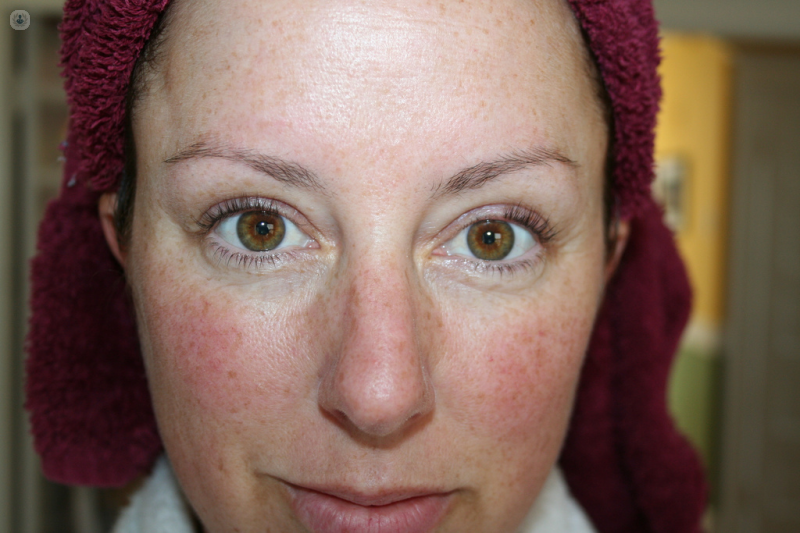

What is facial flushing?

Facial flushing refers to reddening and a feeling of warmth rapidly spreading across any area of the face, or neck. This can also happen on the upper chest. This may also be referred to as blushing, although this tends to be more concentrated to the face.
Symptoms of facial flushing
Facial flushing normally appears as reddening across the face, neck, and chest. This can also appear in blotches or patches in particular areas of the face.
What are the causes of facial flushing?
Flushing happens when there is an increase in blood flow to a particular area of skin. As the blood flow increases, the blood vessels in the area enlarge, thus making the skin look flushed and red. It commonly happens as a result of embarrassment, anxiety, stress, or anger, but there are certain conditions which can cause skin flushing (though not necessarily in the face), such as:
- The menopause
- Hyperthyroidism
- Rosacea
- Cushing’s disease
- Fifth disease
Other causes of facial flushing include:
- Drinking alcohol
- Certain medications
- Eating spicy foods
- Infections on the skin
- Cluster headaches
- Yellow fever
- Pyelonephritis
- Inflammatory conditions
- Fever
- Agoraphobia
- Scarlet fever
Can facial flushing be prevented?
If facial flushing is caused by certain triggers, avoiding these triggers can help decrease flushing episodes. For example, avoiding bright sunlight, spicy food, or extreme cold or heat. If your flushing is a result of anxiety, using relaxation tactics and coping tactics may help to decrease flushing episodes, such as breathing exercises.
If your flushing is difficult to control and you find it does not get better with home management and coping exercise, make an appointment with your doctor.
Treatments for facial flushing
Treatment depends on the cause of the facial flushing. For example, if it is caused by a specific condition, the condition must be treated rather than the symptom of flushing itself. Speak to your doctor to determine the best method of treatment for you.
In some cases, when flushing is causes by the central nervous system, application of a local injection of Botox can help to reduce facial flushing.
Which type of specialist treats facial flushing?
Various specialists can be consulted relating to facial flushing, and it depends on the reasons behind the flushing. For example, if the flushing is related to the central nervous system, a vascular surgeon can be consulted. You may be referred to a dermatologist, or an endocrinologist, depending on the condition. Before specialist consultation, it is recommended you visit your GP to discuss your flushing and your options.
